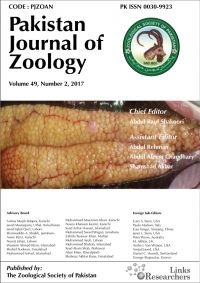Kits Performance of Hyla, Hycole and its Reciprocal Crossbreds in Tropical Climates
Kits Performance of Hyla, Hycole and its Reciprocal Crossbreds in Tropical Climates
Bram Brahmantiyo1*, Henny Nuraini2, Komarudin3, Nurul Pratiwi1 and Ferdy Saputra1
ABSTRACT
Fast growth can reduce production costs so that the price of rabbit meat is cheaper. In order to achieve rapid growth, crossbreeding programs are widely used to produce broiler rabbits. Evaluation of the growth of kits is needed to see their genetic potential in tropical climates. Body weights of kits from Hyla (n = 63), Hycole (n = 68), Hyla x Hycole (n = 72), and Hycole x Hyla (n = 66) rabbits were collected weekly. Weekly body weights were analysed using a general linear model and least square means computed with SAS 9.4. Hycole x Hyla birth weights (62.52 ± 1.55) were greater than birth weights from the other breed groups. However, Hyla had the highest body weights at one and five weeks of age. We also found Hyla to have better litter size (9.65 ± 0.25) than the other breed groups. The superior reproductive and growth performance of Hyla indicated that this breed is the most suitable of the four breed groups under Indonesian tropical climate conditions.
To share on other social networks, click on any share button. What are these?










